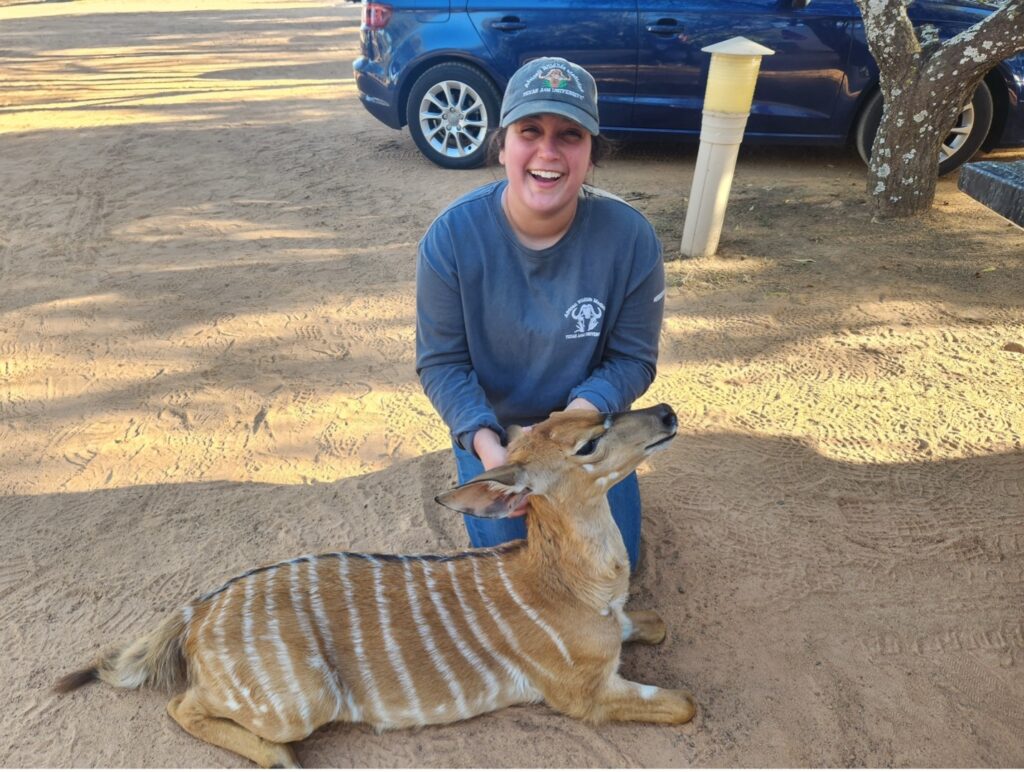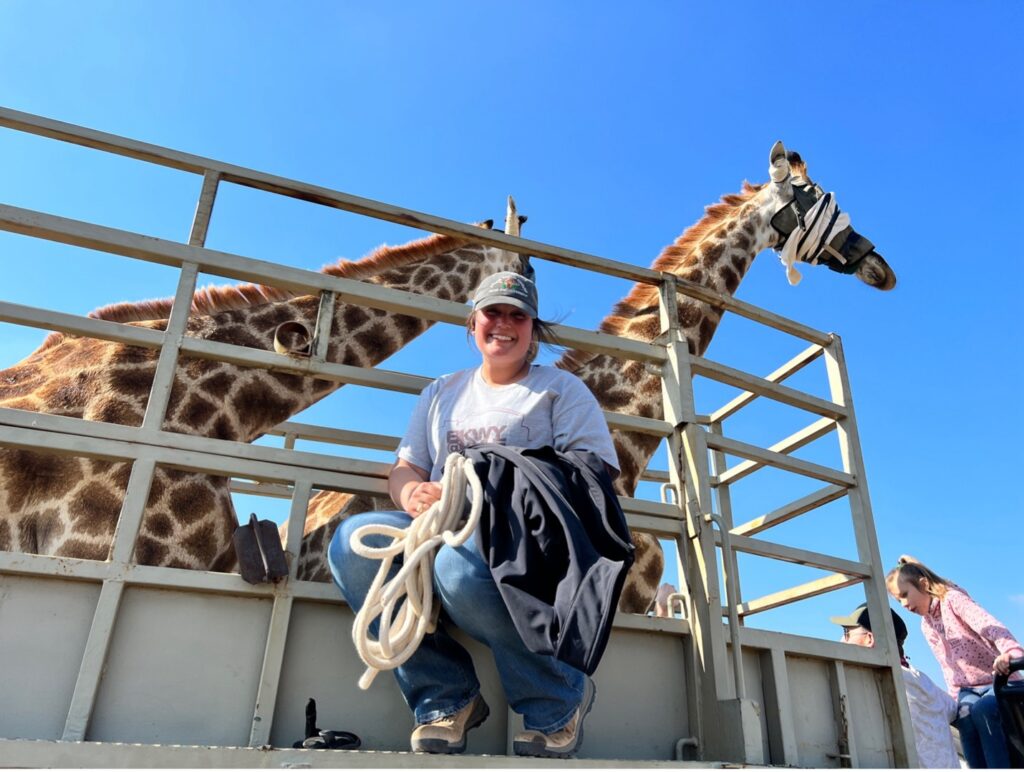By Priya A. ’24, B.S. in Biomedical Sciences student

In June 2023, I studied abroad in South Africa for two-and-a-half weeks through the Texas A&M School of Veterinary Medicine & Biomedical Sciences with Dr. James Derr, a professor in the Department of Veterinary Pathobiology. The name of the course was African Wildlife Medicine, and we partnered with South African veterinarians each day to serve their clients. The purpose of the trip was to gain experience working with African wildlife and knowledge in topics that arise with these animals, such as poaching. This course is unique because it includes both undergraduate and Doctor of Veterinary Medicine (DVM) students.
In South Africa, lions, rhinos, cape buffalo, elephants, and leopards are some of the most ecologically and economically important animals. We saw and worked with some of these species, as well as others. There were two days in particular that were my favorite — the days we worked with white rhinos and giraffes.
On our first day, we worked with 11 white rhinos. Some of us rode in a helicopter with a local veterinarian while others took DNA samples, gave sedatives, and microchipped the rhinos, which helps keep track of rhinos since poaching is a major concern in South Africa. We learned how to be a team, which carried us all the way through our two weeks.

Later in the trip, we captured and transported three giraffes in order to help relocate them safely. This was the most physically exhausting day of the entire trip! Each of us had a particular role to ensure that both the giraffes and our team were safe.
Over the course of our trip, we worked directly with five South African veterinarians and their clients. They challenged us in our critical thinking, clinical, and communication skills. Personally, one of the coolest parts about networking with them was the possibility of getting to return for an externship with them during my fourth year of veterinary school.
As an undergraduate student, I found this experience beneficial and eye-opening as I applied to veterinary school and thought about what type of veterinary medicine I want to pursue. Those of us who were undergrads had opportunities to ask the current DVM students questions and get advice for the application process. If anyone is wanting to get more diverse veterinary experience for their vet school application, I highly recommend applying for this study abroad experience. You never know what new passions might arise!
